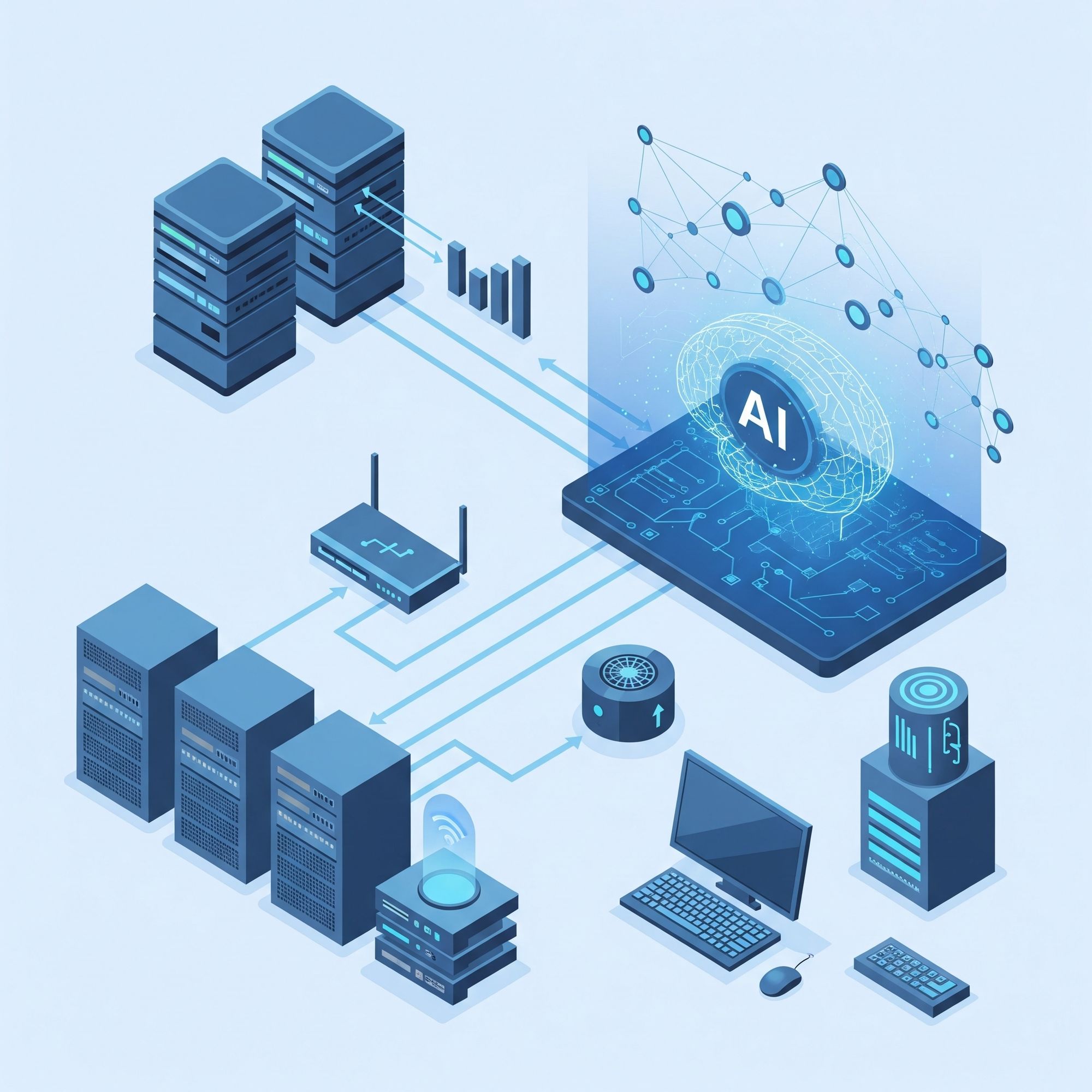The Role of AI in Predictive Maintenance for IT Infrastructure

In an era where digital transformation is critical to business success, IT infrastructure has become the backbone of operations. Whether it's data centers, cloud environments, or enterprise networks, any downtime can lead to massive financial losses and reputational damage. To combat this, organizations are increasingly turning to AI-powered predictive maintenance — a game-changer for ensuring system reliability, performance, and cost-efficiency.
🔧 What Is Predictive Maintenance in IT?
Predictive maintenance refers to the process of anticipating potential failures or degradations in infrastructure components before they happen. Instead of waiting for systems to break down or following a fixed maintenance schedule (which may be inefficient), predictive maintenance uses real-time data and machine learning to forecast failures.
In IT, this means:
Predicting server crashes
Detecting storage device degradation
Anticipating network bandwidth bottlenecks
Forecasting hardware wear and tear
Identifying security vulnerabilities before they are exploited
🤖 How AI Enables Predictive Maintenance
Artificial Intelligence, particularly machine learning (ML) and deep learning, plays a vital role in unlocking predictive insights. Here's how:
1. Data Collection and Monitoring
AI systems ingest data from:
Sensors (temperature, voltage, CPU usage)
Logs (application, system, and error logs)
APIs (cloud services, monitoring tools like Nagios, Prometheus)
Event management systems
This data is then analyzed in real-time or near-real-time for abnormalities and trends.
2. Anomaly Detection
AI models learn the normal operating behavior of systems and flag deviations that may signal:
Hardware degradation
Network latency spikes
Unusual CPU/memory patterns
Threat patterns
Unsupervised learning algorithms are often used here to detect subtle patterns humans might miss.
3. Failure Prediction
Using historical failure data, supervised learning models (e.g., regression, random forests, neural networks) can:
Estimate time-to-failure
Predict likely points of failure
Recommend preventive actions
The goal is to intervene before failure impacts business operations.
4. Prescriptive Insights
Advanced AI models not only predict issues but also suggest:
Root cause analysis
Recommended fixes or patches
Optimal maintenance windows
This helps IT teams take data-driven actions rather than relying on guesswork.
🧠 Benefits of AI in Predictive IT Maintenance
| Benefit | Impact |
|---|---|
| Reduced Downtime | Early detection minimizes system outages |
| Lower Operational Costs | Avoids emergency repairs and inefficient scheduled maintenance |
| Improved Resource Planning | Helps allocate teams and assets more efficiently |
| Enhanced Security | Identifies vulnerabilities and suspicious behaviors before they escalate |
| Extended Equipment Life | Prevents overuse and underuse of IT assets |
| Proactive Decision-Making | Moves from reactive to strategic IT management |
🏢 Use Cases Across IT Infrastructure
🖥️ Servers and Data Centers
AI models monitor:
Fan speeds
CPU temperatures
Disk I/O performance
This helps detect signs of overheating, memory leaks, or imminent hard drive failures.
☁️ Cloud Environments
In cloud platforms (AWS, Azure, GCP):
AI monitors usage spikes, latency, and API call patterns
Predicts when services may exceed limits or when auto-scaling will trigger
Helps optimize cloud resource allocation
🌐 Network Infrastructure
AI-driven tools can:
Detect bandwidth congestion patterns
Forecast router or switch failures
Spot anomalies in packet loss or latency
🔐 Cybersecurity & System Logs
Predictive models analyze logs and network behavior to:
Identify suspicious access patterns
Spot malware signatures early
Prevent data breaches
This overlap between predictive maintenance and threat detection is crucial in modern IT.
⚙️ Technologies Powering Predictive Maintenance
| Technology | Role in Predictive Maintenance |
|---|---|
| Machine Learning | Trains models to recognize patterns and forecast failures |
| Natural Language Processing (NLP) | Parses logs and unstructured text to find warning signals |
| IoT Sensors | Provide real-time system-level monitoring in physical environments |
| AIOps Platforms | Combine AI with IT Operations (e.g., Dynatrace, Moogsoft, Splunk) |
| Digital Twins | Simulate IT systems to test “what-if” failure scenarios |
🚧 Challenges in Implementing AI-Powered Predictive Maintenance
Despite its advantages, implementing AI in predictive maintenance involves:
Data Quality and Volume: AI needs clean, labeled, and continuous data streams.
Integration Complexity: Merging with existing ITSM tools and workflows.
Model Interpretability: Teams need explainable insights, not just predictions.
Cost and Skill Gaps: Initial investments in infrastructure and talent are required.
However, the long-term ROI often outweighs these hurdles, especially for large enterprises.
📈 Future Outlook
The future of IT infrastructure maintenance is intelligent, automated, and proactive.
🔹 Self-healing systems: AI can not only predict but automatically resolve some issues.
🔹 Federated Learning: Collaborative model training across organizations without sharing sensitive data.
🔹 AI + Edge Computing: Real-time predictive insights closer to devices, reducing latency.
🔹 Integration with DevOps: Predictive maintenance insights embedded directly into CI/CD pipelines.
✅ Final Thoughts
AI-powered predictive maintenance is no longer a “nice to have” — it’s a strategic necessity for modern IT operations. It empowers organizations to anticipate problems, reduce downtime, and optimize system performance like never before.
For enterprises, DevOps teams, cloud architects, and IT leaders, embracing AI in infrastructure is the path forward to build resilient, cost-efficient, and secure digital environments.
Ready to implement AI-powered predictive maintenance in your IT stack? Start with monitoring, invest in the right AI tools, and gradually evolve toward autonomous operations.
Let the machines keep your machines running.